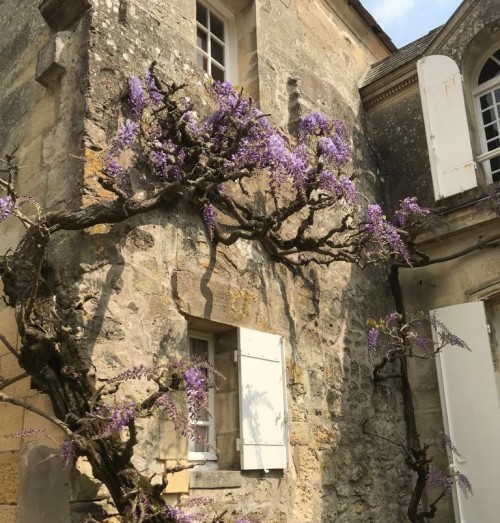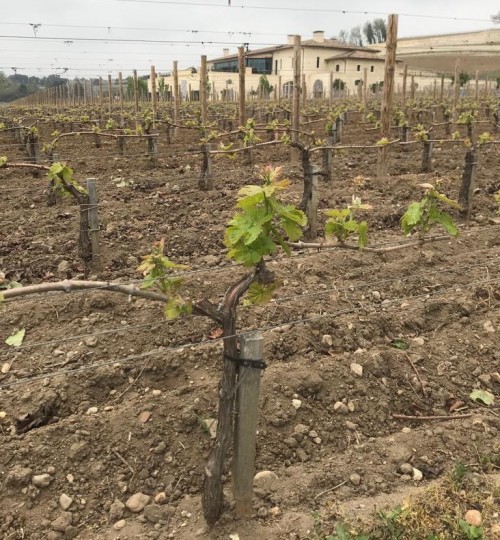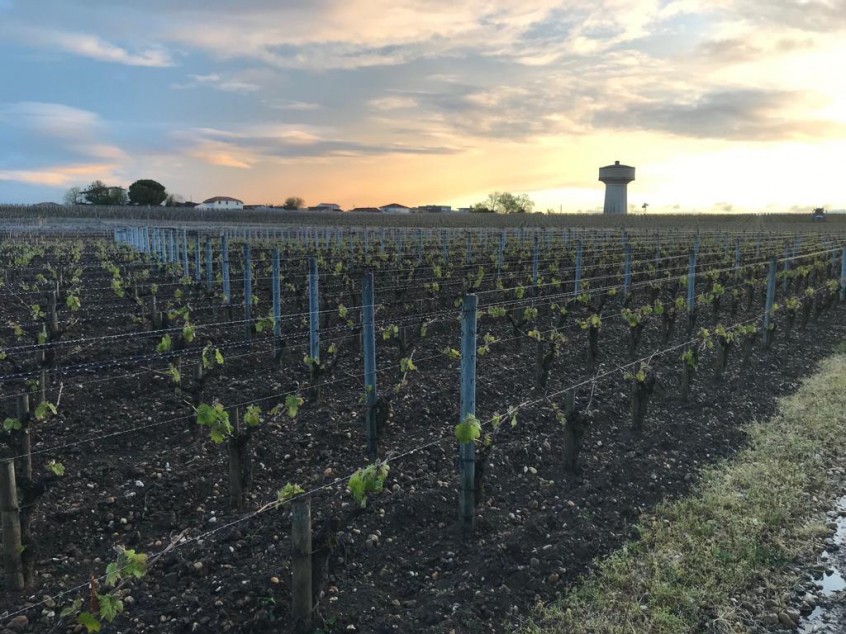Having returned from a very busy few days in Bordeaux, Will Gardener looks back at the different aspects that made 2018 a great year for the region.
A Vintage of Extremes
‘It rained until the 10th of July’ was a comment we heard several times from incredulous wine makers during the en primeur tastings week. Many were convinced they wouldn’t make a wine at all let alone a potentially great one.
Following the rain was a rampant mildew epidemic, which may well have had the single most significant impact on the vintage. There were those chateau that indeed didn’t make a wine at all, there were those that lost a big proportion of their crop, many that saw considerably reduced yields and those that, miraculously, were unscathed.
Back in the UK of course we were witnessing the media coverage of a record breaking summer, and though you can’t neatly relate exceptional British summers with great Bordeaux vintages (the unremarkable 1976, 1995 and 2006 come to mind) it certainly made us winos have a little peak into the proverbial crystal ball.
There is perhaps no pleasure greater than a victory taken from the jaws of defeat and this was succinctly portrayed by the warm pride shown by Monsieur and Madame Cathiard, owners of Château Smith Haut Lafitte, towards cellar master Yann Laudeho. Yann had previously explained during our tasting that at one point things were so bad he felt he had to suggest to his employers ‘there may not be a white wine at all this year’. In the end, their white wine was a testament to how things can turn around with a little sunshine and dedicated wine makers.
The sun came out after the 10th of July and stayed out until October. The final results, in the circumstances, across many chateau were miraculous. The question will not be whether 2018 is a great vintage but how it fairs in comparison to 2016, 2015 and previous classics such as 2010 and 2009. It is not as classically profiled as the 2016’s. This is a more individualistic vintage, more flamboyant, and along with that will come wines that are truly exceptional. It leans more towards the hedonistic 2009 vintage but, critically in my view, it is fresher with more balance. In fact it is the balance that is striking. 2018 is a vintage with casualties and more variation due to the difficulties experienced in the first half of the year, and so careful choice of chateaux will be very important. The team at Nickolls and Perks have a long experience of tasting en primeur and will, of course, be very happy to give you our personal guidance.
 Pretty vine creeping up Chateau
Pretty vine creeping up Chateau
The Style of the vintage
We started our tasting at Chateau Montrose this year. What struck me most was the freshness. I was surprised. I expected a riper profile. The alcohol was well integrated. Tannins were particularly fine, under wraps of lush silky-textured fruit. This was undoubtedly a promising start to the week, a high watermark.
Calon Segur and the high-flying Cos D’Estournel were lovely too, both with calm ample fruit and fine chalky tannins. Saint Estephe with its high clay content, loves a dry summer. Pagodes de Cos was one of the myriad of brilliant second wines we would taste.
At its best 2018 has produced a complete wine, exemplified by probably the finest Chateau Lafite I have tasted from barrel since the great 1996. This legend in the making has the most perfect balance. Calm and subtle, complex yet powerful and generous with incredible length. Again the second wine showed very well, our tour leader Leigh Claridge from Maison Sichel eulogising that it was the finest
Carruades he had ever tasted.
It is never really appropriate to ask the vintage comparison question of wine makers. These are their babies and you wouldn’t expect a mother to compare her children. Of course we do get round to it in as unobtrusive manner as possible. Somewhere between 2009 and 2016, was a common response. Wines that in many cases will be early drinkers, and certainly many will keep for decades, especially those magnificent Cabernet dominated examples.
Phillipe Dhalluin at Chateau Mouton Rothschild explained how the skins this year were very thick, so evidently, looking through the glass window in one of the tanks the ratio of skins to juice was almost 50:50. The work in the cellar would be a key to success this year, a true wine-makers vintage.
To prevent harsh tannic wines a very gentle touch would be required with cooled macerations and non-aggressive lees contact. The continued reduction of the percentage of new oak maturation, which can help build structure, would also be prevalent. Though Bruno Borie at Ducru Beaucaillou, explained they continue to use 100% new oak, not to add or change the flavour of the wine but as an ideal sterile vessel for maturation.
This would be our first taste of Saint Julien, and it blew me away. All three wines delivered. Lalande Borie, La Croix de Beaucaillou and Ducru itself were all the finest examples I have ever tasted. It would turn out to be the familiar story of the commune.
Chateau Margaux was understated as always, an intellectual wine, very long and fine. It will be challenging 2015 & 2016, it may even eclipse them. The UGC tasting of the Margaux wines also impressed, with generally higher Cabernet proportions than usual. They pretty much used as much Cabernet Sauvignon as they had available in the vineyard, such was the quality this year. There is no doubt this is a Cabernet vintage.
Our visit to the right bank started at Chateau Larmande where the general quality was very good, though only Clos Fourtet gave us a glimpse of greatness. My first impression of this beauty was it is even better than 2015. Cheval Blanc and Ausone, with higher Cabernet Franc, excelled. Figeac, with its Cabernet Sauvignon on gravel, is a potential star as is often the case recently.
Pomerol too showed its potential at La Conseillante and Vieux Chateau Certan. The Merlot on the finest clay is exceptional as usual but in general the Merlot varietal suffered in the heat and there is more variation in quality where Merlot is predominant in the blend.
A slight chink in the armour of the 2018 vintage maybe the general level of quality in Pessac Leognan. In 2015 & 2016 wines here were undoubtedly brilliant. With 2018 too many questions were brought to mind.
 Sprouting vine at Cheteau Pavie
Sprouting vine at Cheteau Pavie
Factors Effecting the Style of the Vintage
Climatically, the past couple of years have been particularly turbulent. Extreme frost scarred the 2017 vintage. Equally mildew has scarred 2018. For those not so dramatically affected the realisation of lower yields will
have been welcomed qualitatively and reflected in the fleshy silky density in the wines.
Due to a colder and wetter winter than the average, bud break was later than usual, around 5th April for the Merlots. As you can see from the photo above, taken at Chateau Pavie on 5th April 2018, the vine growth is much further forward, I think this is probably the furthest forward I have ever seen.
The temperature stayed low throughout the spring and humidity high, due to very regular if not heavy rainfall. Cryptogrammic diseases particularly mildew were now very much on the radar. Despite this poor start, in general flowering occurred consistently and in line with the 20 year average.
The inclement weather continued throughout the early summer, and didn’t break until mid-July. The first and second parts of the year couldn’t be more different with the last ten days of June and the first 10 days of August experiencing record breaking temperatures. Only 2003 was hotter overall in the past 100 years. Beneficially, and unlike in 2003, the nights were cool and this is understood to have had partial influence in furnishing the wines with their hallmark freshness.
Despite the heat and very dry conditions between mid-July and the end of September, with only 2 inches of rainfall during this period, the vines did not suffer from hydric stress which inhibits the growth cycle by shutting down into a type of hibernation. It seems the excesses of the early part of the year that nearly wrote off the vintage, eventually sustained the vines through these equally excessive conditions.
The final and probably most defining jigsaw piece was the extent of perfect conditions vignerons were given to fine tune their crops. Able to re-visit the vineyard time and again to pick at their leisure was such a gift. This type of microvinification perhaps wouldn’t have been possible a decade ago. Deep investment in advanced cuveries with vats of bespoke sizes, allow wine makers to tailor the vinification of dozens of different plots with an enviable accuracy.
Keep up to date with the latest releases at https://www.nickollsandperks.co.uk/Wine/En-Primeur/2018-Bordeaux
William Gardener, MD

